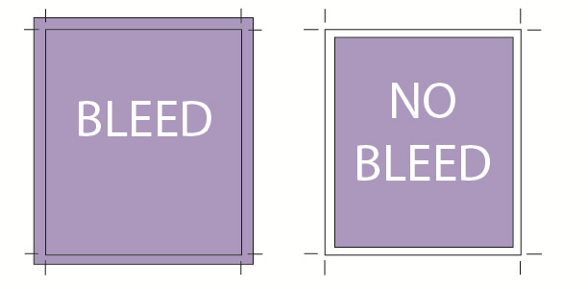
Crops and Bleeds
Today is the big day. After months of blood, toil, sweat and tears; you’re finally ready. This is your magnum opus, the boldest undertaking of your life, an endeavour that many called you crazy for. It has just been sent off to the printers. You spent what felt like a millennium picking out the perfect paper grammage and size, A5 with 180gsm. A cute little number with a gloss coating that reflects the light in such a way that you’d have to fight magpies for its shine. You’re proud of your work.
You receive an email from the printer. Heart racing you hesitate to open it. Could something have gone wrong? Slowly you take a peek, and the words that show will haunt you for the rest of your days.
“Please include crop marks and 3mm bleed.”
What are Crops?
In printing, crops (commonly known as crop marks) are a set of marks that define the boundaries of a printed area. Crop marks are thin lines placed around the corners of a document and they tell the printer where to trim the paper. As many print jobs need to be trimmed to exact dimensions, the crop marks indicate where the document will be cut.
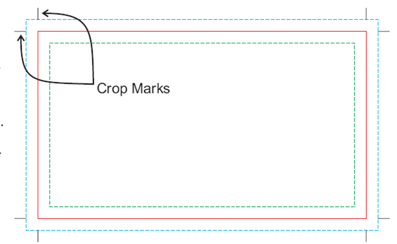
The image shows an example of where crop marks can be used. A printer will trim the document to the finished size using a guillotine or, in some cases, scalpels or scissors. Once the line between the marks has been trimmed, the document will be the required size.
In general the measurements for crop marks range from 3mm to 5mm in length and are offset by 2-3mm to ensure they they are not visable on the finished product
What are Bleeds?
To have bleed on a document means that the printed design is intending to extend to one or more of the edges of the document. It ensures that when the document is trimmed, the design goes to the very edge of the page. As no printer is perfect and there are slight variations in trimming. If you were to not have any bleed on your design, you could be left with white strips along the edges of the finished project.
There is a distinction between two types of bleeds. The full bleed means that every element of your document will exceed its actual frame whereas the partial bleed means that only some elements of your document will go beyond the layout of your document. This illustration shows a full bleed on a document. This will ensure that when trimmed down, the finished project will have clean borders without white stripes.
The standard measurement for bleed is 3mm to 5mm or more when considering large format out put.
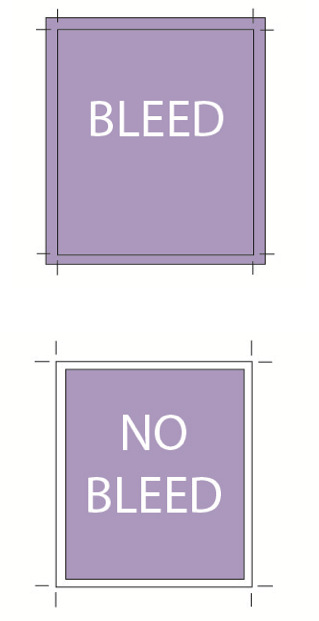
Working Together
Crops and bleeds ensure the quality of your printed documents. Below is an example of what happens when you combine crops and bleeds.
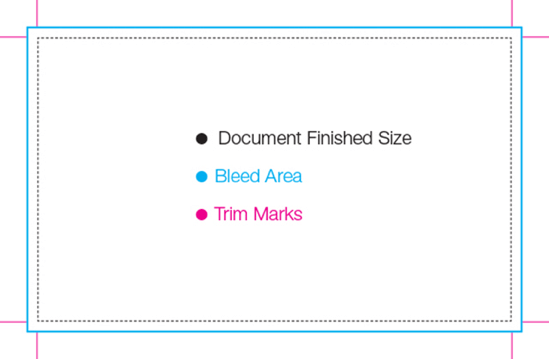
When you create a document that will be printed, crops and bleeds are essential elements to ensure that your final document retains a professional look. This is why you may receive emails asking you to add it to your files. In the above picture, when effectively used, the final finished document (shown in black) will be a nearly perfect size with zero white stripes around its edge.
Regardless if the document has bleed or not, any print job that needs to be trimmed to size will require crop marks. These can be applied using the same software used to create your design. Printers typically print on paper that is larger than the actual document size, for example paper sized SRA3 (450mm by 320mm) would be used for printing documents that aim to be A3 (420mm by 297mm) in size. This extra size allows for the printing of crops marks and bleeds.
Creating Crops and Bleeds
The following post will show you how to add crop and bleed in the commonly used design programs.
Adobe Photoshop
Adobe InDesign
Quark Xpress
Step 1 – Create the document
Begin by creating a new document in Photoshop to the trim size (final size) and resolution that you need. Make sure that rulers are displayed by choosing View > Rulers, and also make sure that snapping is enabled by choosing View > Snap. Click on the ruler and drag a guide to the edge of the document. The guide should snap to the edge of the document automatically. Do this for all four sides of the document.
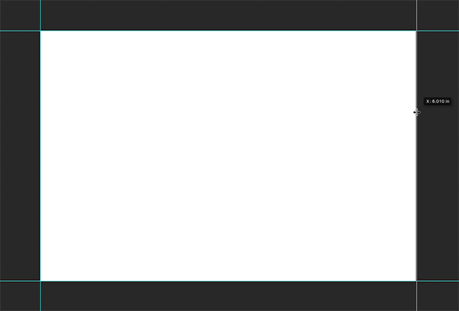
Step 2 – Create space for the bleed
Now increase the image size (document size) to the size of the project including the bleed. Using some basic maths, you can determine that if your desired bleed amount is 5mm on all four sides, simply add 5mm to each dimension. To achieve this, choose Image > Canvas Size and change to dimensions to the correct amount. Make sure that the anchor at the bottom of the dialog box is set to the centre to force the document to add pixels from the middle out.
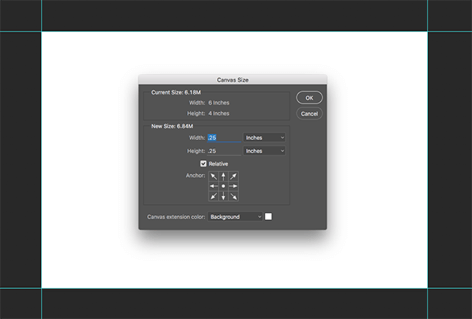
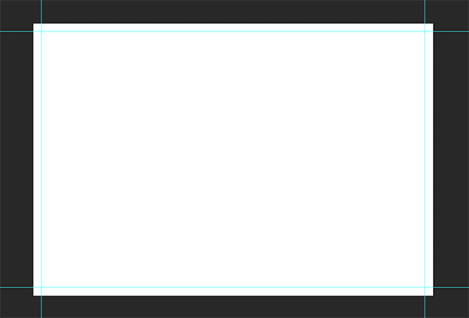
When you’re finished, you should end up with a document that is to the bleed size of your final project and guides indicating where the document will trim.
Step 3 – Add the trim marks
The file that we’ve created so far is pretty much all the printer should need. However, there might be times for one reason or another, that you’ll want trim marks that go along with the file that indicate exactly where the project should be trimmed.

To do this you will need to choose Image > Canvas Size and enable the relative button. Enter 30mm in the Width and Height dimensions and click OK. This will expand the canvas by an additional 30mm in both dimensions. Create a new layer for your marks and create a selection in the corner areas of the image using the Rectangular Marquee tool. You can do all four corners at the same time.
With the selections active, choose Edit > Stroke and apply a 2px stroke to the active selections. Deselect the active selections and hide your guides to view the crop marks applied to the project.
